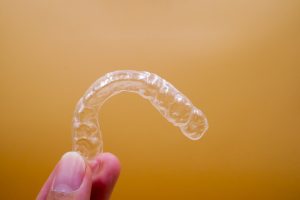What To Expect With Child Orthodontics
What Foods Are Good For Children’s Teeth?
June 13, 2019Dealing With Dry Mouth
June 27, 2019
While not all children will need orthodontic care, it is recommended that every child has an orthodontic assessment by the time they turn 7. Serious dental concerns begin developing around that age, and braces are sometimes recommended to correct these issues. Some benefits of child orthodontics include an improved ability to speak and chew, a reduced number of cavities, and an easier time brushing and flossing teeth. During your child’s first orthodontic visit, they will be evaluated and receive dental X-rays to determine what treatment should look like. Learn more about what to expect when your child receives braces!
Benefits of Child Orthodontics
As kids grow and develop, their teeth will erupt and shift, as well. Many parents wonder at what age their child should be evaluated for orthodontic care, and most are surprised at the age that the American Association of Orthodontics recommends. By the time they turn 7 years old, children should have their first orthodontic appointment, whether they have obvious orthodontic issues or not. Although 7 is a young age, children’s teeth begin erupting as infants, and dental problems can develop as soon as their first tooth erupts. At this age, children have a mix of primary (baby) and permanent teeth, and eruption patterns can affect malocclusion. If a problem exists, their orthodontist can inform you of what treatment should be done, how long it will last and what to expect. Not all treatments require braces, especially when children haven’t developed all of their permanent teeth yet. Some additional advantages of seeing the orthodontist at an early age include:
- Detecting hidden dental problems
- Monitoring the progress of incoming teeth and facial/jaw development
- Reducing the risk of impacted teeth
- Guiding teeth into their ideal positions
Types of Braces
If your child is eligible for orthodontic treatment, there are a variety of options for you and them to choose from. Braces essentially correct alignment issues by steadily moving teeth into a straighter position. For young kids, most just need braces with brackets, wires and rubber bands. Metal braces with multi-colored bands are a popular choice for kids, but clear removable braces, called Invisalign, are also common, but they use plastic trays called aligners to adjust teeth instead of brackets and wires. Clear brackets, which mimic your child’s teeth color, can also be used for those patients wanting their treatment to be as discreet as possible. Some children might need to use other appliances, such as headgear, to provide a stronger force to their teeth, but this is rare and is usually worn just at night.
Orthodontic treatment for children typically lasts up to two years, but can vary depending on the dental issues that your child might have. Throughout treatment, they will have regular orthodontic checkups to tighten their wires and fix any broken brackets, plus provide a thorough cleaning. After treatment, most kids will be encouraged to wear a retainer to keep their newly-straightened teeth in their correct positions for years to come. Most retainers are made of hard plastic that is shaped like a mouthguard or has metal wires attached to it. These appliances prevent malocclusion from developing again, which will help your child avoid getting braces at a later time in life.
How To Help Your Child Prepare
Although the majority of kids and teenagers get excited to have braces, some can be hesitant about having something foreign in their mouths. At Hardy Pediatric Dentistry & Orthodontics, we understand that a child’s smile and how it looks can affect their self-esteem and confidence. We do all that we can to make your child comfortable and informed during the entire treatment time, and we practice compassionate dialogue to ensure that your child is prepared for braces. As a parent, one of the best things that you can do to help your child prepare for orthodontic care is establishing a good oral hygiene routine with them before treatment begins. Braces are notorious for getting food stuck in them, so it is much easier for bacteria to grow and decay to form during treatment. Consistently brushing and flossing teeth before, during and after treatment will keep their teeth free of plaque while giving them a beautiful smile. Educating your child about what foods are not good to eat during treatment will also prevent broken wires and brackets, which can be annoying and costly to repair. In this day and age, orthodontic care is so easy, fast and safe that kids don’t need to fear the orthodontist, especially if they’ve done all they can to protect their teeth.
Importance of Oral Health
Receiving orthodontic care is one way to establish good oral health, especially for young kids and teenagers. Crooked teeth can cause a lot of problems for kids, like affecting how their permanent teeth erupt and increasing the likelihood of cavities as food becomes easily stuck between them. As a parent, being proactive about your child’s oral health should be a priority. If your child is due for an orthodontic checkup, call Hardy Pediatric Dentistry & Orthodontics at (720) 887-6003 to schedule a consultation. Call now to kickstart your child’s journey to healthier, straighter teeth!
